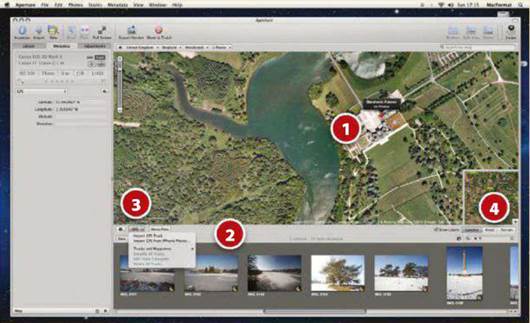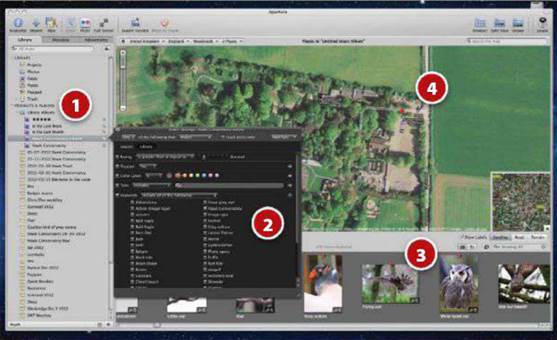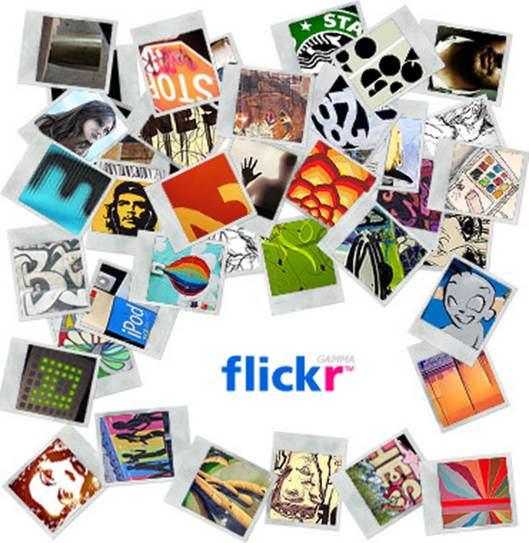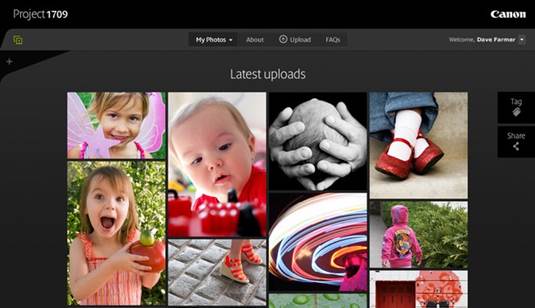Now where did I take that picture?
Geo-tagging is the process involved for
embedding location information into an image file so it can be plotted on a
map. This data can be recorded automatically, by an iPhone for example, or
added later. This can then be read by social media sites, such as Flickr or
Facebook, so your friends can be see where you’ve been photographing. Apple’s
apps make it easy to do this, and we’ve used Aperture here to show how it works.
1.
Pins
Pins are spots that you’ll see on a map
that have images associated with them. Here, we’ve associated a selection of 24
images from our library with the historical Blenheim Palace in OXfordshire.
2.
Photo stream
These are photos that are located in a
selected folder in your library. They conveniently line up along the bottom of
the map, ready to be dragged onto pins.
3.
GPS import
Aperture will be able to automatically
import the GPS information stored in iPhone photos and handily show it on a
map. If you’re using a separate GPS device, you can still have this
information, but you will need to import its tracking files first.
4.
Google Maps
All the usual Google Maps options are
present here, making tracking down your locations easy. The search box at the top
right of the window can get you in the correct area, you can them move your pin
as you wish on the map to put it in exactly the right place.

Geo-tagging
is the process involved for embedding location information into an image file
so it can be plotted on a map
Get your sorting sorted with Smart
Albums
A smart album works like a smart folder in
Finder – it’s in a sense a saved search, and updates itself as images are added
that fit its criteria. Here, in Aperture, we’ve searched for photos tagged with
the keyword ‘Hawk Conservancy’ for one smart album, and then begun another that
contain images with those keywords that have also been edited. We’ve also
opened the Places window to attach these images to a pin. iPhoto also has smart
albums, and a feature in Lightroom called smart collections that works the same
way.
1.
Ratings
To help you get organized you can rate your
photos out of five as you go. A particularly useful smart album is one that
shows your four- and five-star rated images, so you can quickly pull up your
best pictures to work with.
2.
Keywords
Handily, Aperture supports exactly the same
keywords system as iPhoto, so your tagged images can quickly and conveniently
be searched and displayed.
3.
Image stream
The photos that appear along the bottom of
the screen change as more criteria are added to the folder. If one of the
images needs editing work done, then a double-click brings it up full-screen
ready for adjustment.
4.
Places
A convenient feature can be found in the
Places window, which can be opened to mark a whole folder of images on the map.
If you wanted to do the same with images of people, you can do similar with
Faces if sorting photos of a family gathering, for instance.

Get
your sorting sorted with Smart Albums
From your Mac to the mantelpiece
If you’re using iPhoto or Aperture, Apple
offers a digital printing service that binds your images into books, or makes
them into cards or calendars. Aperture is limited to simple prints or books,
but you get a choice of four book sizes with hard or soft covers, and there are
11 styles to choose from. The travel themes can even produce maps of your trips
using the Places data embedded in your images. Aperture can export to a
selection of other book printers too, and selecting the Non-Apple Book option
on the New Book window will bring these up in your web browser. Prints can also
be ordered from your Mac.
iPhoto users are better catered for, with
book options in addition to cards and calendars grouped under a menu called
Keepsakes. As iPhoto can import data from iCal if you want a calendar already
printed with family birthdays, and can be up to 24 months in length. Apple’s
letterpress cards are embossed with a pattern and printed with your photo, and
there are 27 themes to choose from.
If it’s prints you’re after, then exporting
a batch of JPEGs and uploading to any web-based digital printer such as
PhotoBox or the Wex Photographic printing service is perfectly possible as long
as you’re prepared to juggle a web browser upload or even FTP.
Sharing sites
Because Facebook isn’t the only one,
here are some other options
Flickr
Probably the most famous site dedicated to
photography, and arguably the best. Flickr has suffered neglect at the hands of
its owner Yahoo!, but the tide could be turning following an internet campaign
aimed at Yahoo!’s new CEO. Flickr offers a free account, but a Pro account has
benefits and is necessary once you’ve got more than 200 photos uploaded. The
site makes a good hosting solution and galleries can be inserted into blogs,
but their use of Flash makes them unsuitable for iOS use.

Flickr
offers a free account, but a Pro account has benefits and is necessary once
you’ve got more than 200 photos uploaded
500px
500px is a hobby project created within
blogging service within blogging service Live journal that came to fruition in
2009. The site uses an algorithm to analyze photos uploaded to it. And those
judged to be of sufficient quality may be displayed on the front page of the
website. Whereas exposure on Flickr often comes about thanks to a
photographer’s popularity, the 500px system means a first-time up loader stands
a chance of seeing his work featured if it’s judged to be of high enough
quality.
Google+ photos
The photo-sharing service formerly known as
Picasa lives on in Google+ photos. Anyone with a Google account for a lot of
JPEGs. Google’s iPhone app offers an instant upload feature that will see any
phone snaps directly uploaded to the site. They’re set as private and stored in
a special folder, but if you install the Google+ app and don’t want instant
upload, you’ll need to delve into the settings to disable it.

They’re
set as private and stored in a special folder, but if you install the Google+
app and don’t want instant upload, you’ll need to delve into the settings to
disable it
Tumblr
Tumblr is an extremely popular blogging
platform, which is tailored toward sharing photos and multimedia content.
Astonishingly, more than 71 million posts are created on the site every day,
and the online dashboard interface and iOS app make posting your photos a
simple matter. Tumblr is particularly popular with teenagers, but a popular and
well-curated Tumblr blog can also be an asset to anyone trying to promote their
work, and many artists and photographers have built solid reputations using the
site.
Project 1709
A sharing site form heavyweight camera manufacturer
Canon, the cryptically named Project 1709 is still currently in beta testing.
Anyone can, however, request access. The site concentrates more on storing and
organizing your photos, with no limit to how many photos you can upload, but a
recent update has added a degree of interoperability with Flickr, along with
the ability to share your photos on Facebook. Canon provides a desktop
uploading tool so you can copy photos directly from your Mac, or you can use a
web browser.

A
sharing site form heavyweight camera manufacturer Canon, the cryptically named
Project 1709 is still currently in beta testing